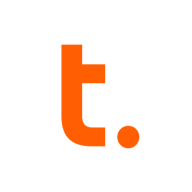

Teradata and Talend Open Studio are leading players in the data management sector. Teradata has an advantage in handling large-scale data warehouse operations due to its fast query execution and robust parallel processing capabilities. Talend Open Studio excels in seamless integration with various data sources, making it a preferred choice for diverse business environments.
Features: Teradata is known for its massive parallel processing, advanced analytics, and scalability, making it ideal for large data environments. Its intelligent workload management and adaptability enhance performance. Talend Open Studio is valued for its extensive ETL capabilities and pre-built connectors, allowing easy integration with multiple data sources. The platform supports user-friendly operations, appealing to organizations with varied technical expertise.
Room for Improvement: Teradata faces challenges with its high costs and complicated pricing structures. Users also suggest enhancements in transactional processing and user interface. Talend Open Studio's open-source version lacks certain features, presents high resource consumption issues, and could benefit from a more intuitive interface design for improved user experience.
Ease of Deployment and Customer Service: Teradata offers options for on-premise and cloud deployments, often favored by larger organizations due to its infrastructure needs. It is praised for responsive customer support. Talend Open Studio provides flexible deployment options suitable for smaller setups, with generally satisfactory customer service, despite occasional limitations in technical support and documentation.
Pricing and ROI: Teradata is a premium solution, optimized for large enterprises with specific data requirements, reflected in its pricing. The cost is justified for its performance and advanced features. Talend Open Studio offers a more budget-friendly option, with its open-source version appealing to a wider range of businesses due to lower initial costs, making it accessible for smaller teams.


Talend Open Studio is a free, open source ETL tool for data integration and Big Data. The solution enables you to extract diverse datasets and normalize and transform them into a consistent format which can be loaded into a number of third-party databases and applications.
Talend Open Studio Features
Talend Open Studio has many valuable key features. Some of the most useful ones include:
Talend Open Studio Benefits
There are several benefits to implementing Talend Open Studio. Some of the biggest advantages the solution offers include:
Reviews from Real Users
Below are some reviews and helpful feedback written by PeerSpot users currently using the Talend Open Studio solution.
Elio B., Data Integration Specialist/CTO at Asset messages, says, "The solution has a good balance between automated items and the ability for a developer to integrate and extend what he needs. Other competing tools do not offer the same grade of flexibility when you need to go beyond what is provided by the tool. Talend, on the other hand, allows you to expand very easily."
A Practice Head, Analytics at a tech services company mentions, “The data integration aspect of the solution is excellent. The product's data preparation features are very good. There's very useful data stewardship within the product. From a technical standpoint, the solution itself is pretty good. There are very good pre-built connectors in Talend, which is good for many clients or businesses, as, in most cases, companies are dealing with multiple data sources from multiple technologies. That is where a tool like Talend is extremely helpful.”
Prerna T., Senior System Executive at a tech services company, comments, “The best thing I have found with Talend Open Studio is their major support for the lookups. With Salesforce, when we want to relate our child objects to their parent object, we need to create them via IDs. Then the upsert operation, which will allow you to relate a child object to the event, will have an external ID. That is the best thing which keeps it very sorted. I like that.”
An Implementation Specialist, Individual Contributor at a computer software company, states, “I can connect with different databases such as Oracle Database or SQL Server. It allows you to extract the data from one database to another. I can structure the data by filtering and mapping the fields.” He also adds, “It is very user-friendly. You need to know the basics of SQL development or SQL queries, and you can use this tool.”
PeerSpot user Badrakh V., Information System Architect at Astvision, explains, "The most valuable features are the ETL tools."
Teradata is a scalable data analytics platform designed to meet enterprise demands for large-scale data management and processing, focusing on performance, scalability, and security for complex query executions.
As a leading data warehousing solution, Teradata integrates advanced analytics enabling organizations to derive insights from massive datasets. It supports high-volume data workloads with its architecture optimized for analytical queries. Users benefit from its robust scalability, allowing seamless expansion as data grows. Teradata's SQL engine is compatible with a wide range of data types, ensuring flexibility in data analysis. With advanced security measures, it protects sensitive data across various environments, providing peace of mind to users handling critical information.
What are the most important features of Teradata?Teradata is widely used in industries like finance, telecommunications, and healthcare, where data-driven decisions are critical. Companies leverage its robust analytics capabilities to enhance customer experiences, streamline operations, and ensure compliance with regulatory requirements. In these sectors, quick access to data insights can significantly impact competitive advantage.
We monitor all Data Integration reviews to prevent fraudulent reviews and keep review quality high. We do not post reviews by company employees or direct competitors. We validate each review for authenticity via cross-reference with LinkedIn, and personal follow-up with the reviewer when necessary.